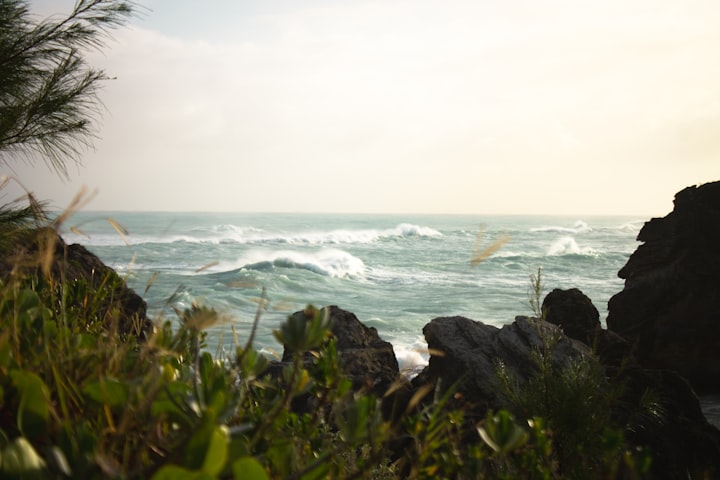MONARCH BUTTERFLY ADDED TO ENGANGERED SPECIES LIST
Monarch Butterfly populations have been devastated over the last past few decades. Find out why the IUCN had added these iconic pollinators to the endangered species list and how scientists are working to save them from extinction.

I haven’t seen a monarch butterfly at the cottage for many years. It’s sad, and not only because they’re iconic and beautiful.
When our family first built our cottage back in the 70s, the Bruce Peninsula forest was thick with the monarch’s orange-and-black wings. They’re probably the best known butterfly in this part of the world because of their size and striking appearance.
MIGRATE ANNUALLY FROM AS FAR AS SOUTH AMERICA
When the cottage was new, we developed the habit of looking up all the species we came across in field guides. In the case of the monarch butterflies, I remember my mother being astounded that “a little thing like that” migrated annually from as far as South America to our neck of the woods in Southern Ontario.
Even so, they make the hazardous migration south every fall, travelling as many as 4,000 kilometres along the way. Then, later generations head up to the northeastern US and southern Canada each spring.
They’re called monarch butterflies in honour of William of Orange, the British monarch who ousted the Stuart royal family. Their scientific name is Danaus plexippus.
NORTH AMERICA – EASTERN AND WESTERN POPULATION
Although monarchs live in many parts of the world, from New Zealand to Spain, they’re most common in North America. They have an eastern and a western population.
The eastern population winters in Florida or Latin America while their western cousins head down to California or Mexico. Although the Rocky Mountains separate them, they’re all one species and they’re identical genetically.
All butterflies, including the monarch, have a four-phase life cycle. They begin in the spring as an egg from which a larva emerges in about a week.
LAY EGGS ON UNDERSIDE OF MILKWEED LEAVES
Females lay about 400 eggs, and their favourite spot is on the underside of of fresh milkweed leaves. That’s why some people call them milkweed butterflies.
After about 25 days of feeding on the milkweed leaves, the larva spins a coccoon, or what scientists call a pupa or chrysalis. After a couple of weeks of pupation, the adult butterfly we all know and love emerges. They live between six and nine months, so they only make a single one-way trip when they migrate.
I’m far from the only person who’s noticed a sharp decline in the number of monarch butterflies in North America. Sadly, the International Union for the Conservation of Nature (IUCN) added them to their Red List of Endangered Species this week.
HABITAT DESTRUCTION AND CLIMATE CHANGE
Like most of the species extinctions underway recently, the main threats they face are habitat destruction and climate change. The populations have shrunk by somewhere between 22% and 72% in the last ten years.
One way that climate change has been especially harsh on monarch butterflies is the drought it causes. They leave less milkweed around as a result while wildfires also destroy their habitat.
Hot weather forces the monarchs to migrate too early and they often arrive before the milkweed plants are ready. Severe storms have also taken a huge toll.
INDUSTRIAL-SCALE AGRICULTURE AND URBAN SPRAWL
Habitat destruction by humans is another severe threat to the population. Expansion of industrial-scale agriculture and urban sprawl lead to logging, much of it illegal.
Intensive agriculture poses another threat. It’s wiping out the milkweed and monarch populations through the use of chemical pesticides and herbicides.
Over the past forty years, the western monarch butterfly population has declined by an unimaginable 99.9%. The eastern population has fared slightly better, having been devastated by 84% since 1996.
“MONARCH BUTTERFLIES TEETER ON THE EDGE OF COLLAPSE”
“It is difficult to watch monarch butterflies and their extraordinary migration teeter on the edge of collapse, but there are signs of hope,” said Anna Walker, a member of the IUCN SSC Butterfly and Moth Specialist Group. “So many people and organisations have come together to try and protect this butterfly and its habitats.”
The IUCN Red List of Threatened Species is an exhaustive global database assessing the risk of extinction for 142,577 plant, animal and fungus species. Threatened species now make up over 40,000 of those life forms.
The Red List’s importance goes beyond individual species’ well-being. It’s also a vital sign of Earth’s biodiversity health.
RED LIST A VITAL SIGN OF EARTH’S BIODIVERSITY HEALTH
The list goes beyond numbers to outline each species’s range, habits and ecology, use and trade, threats and conservation needs. The list has nine categories ranging all the way from “least concern” to “extinct.”
The IUCN updates its list every year in July and December. The news about the monarch butterfly is part of this year’s July update along with bad news about the world’s sturgeon population but some promising results about the global tiger population.
Our planet is losing its biodiversity in many ways. The three main theats to our ecosphere are loss of habitat, climate change and land degradation.
INTEGRATED, NATURE-BASED WAYS TO PREVENT EXTINCTION
These aren’t separate threats. They’re as interrelated as nature itself. In response, humanity needs to implement integrated nature-based approaches to combat them.
Our planet’s diverse ecosystems are what makes it possible to live here. Biodiversity prevents flood and storm disasters, filters our water and regenerates our soil.
Biodiversity is also vital to our food security, disease prevention, industry and livelihoods. Most jobs rely on clean water and traditional agriculture and forestry employ the vast majority of our planet’s working people.
MORE RESTORATION JOBS THAN COAL, MINING, LOGGING AND STEEL
Restoring ecosystems isn’t about restoring nature for its own sake. It’s essential to humanity’s survival and prosperity. The business of nature restoration employs more people than the coal, mining, logging and steel industries put together.
We as a species have to stop viewing Earth as a lifeless repository offering up resources for us to extract and exploit. We have to realign our worldview to recognize that humanity is just one small part of our natural world rather than its distinct and disinterested master.
“Few species evoke the awe and wonder that the migratory monarch butterfly commands,” Dr. Sean T. O’Brien, president and CEO of Nature Serve concluded. “Never has there been a more pressing time to collect data, like that provided by the NatureServe Network, on our nation’s biodiversity.”
We always have more to learn if we dare to know.
Learn more
Migratory monarch butterfly now Endangered – IUCN Red List
IUCN Red List of Threatened Species
Safeguarding Biodiversity Means Conserving 44% of Earth’s Land
‘Making Peace with Nature’ Report Offers Sustainable Blueprint
About the Creator
David Morton Rintoul
I'm a freelance writer and commercial blogger, offering stories for those who find meaning in stories about our Universe, Nature and Humanity. We always have more to learn if we Dare to Know.






Comments
There are no comments for this story
Be the first to respond and start the conversation.